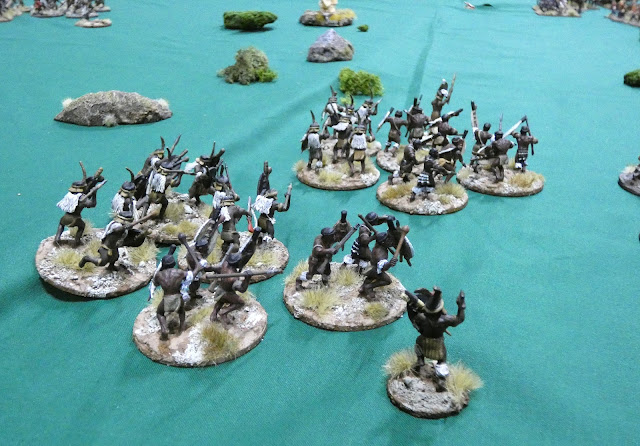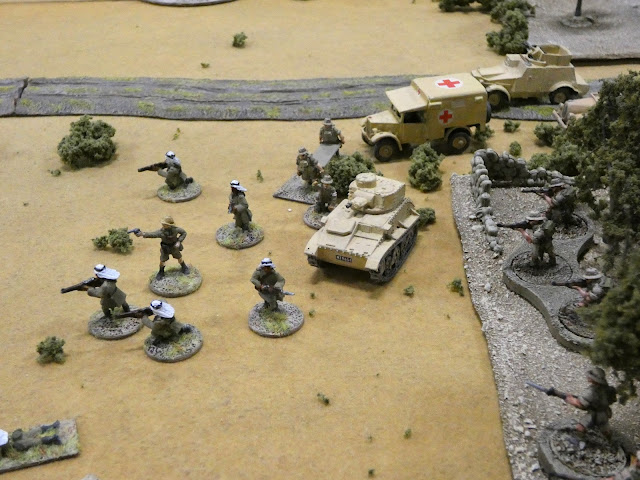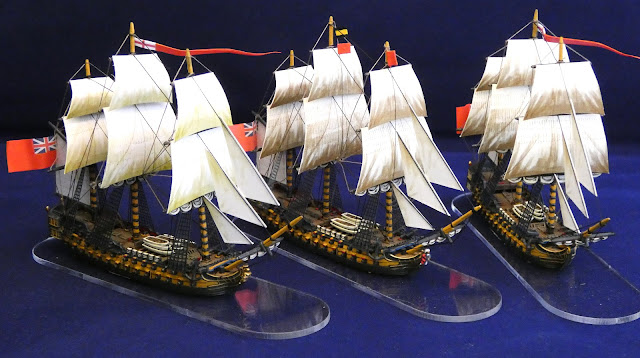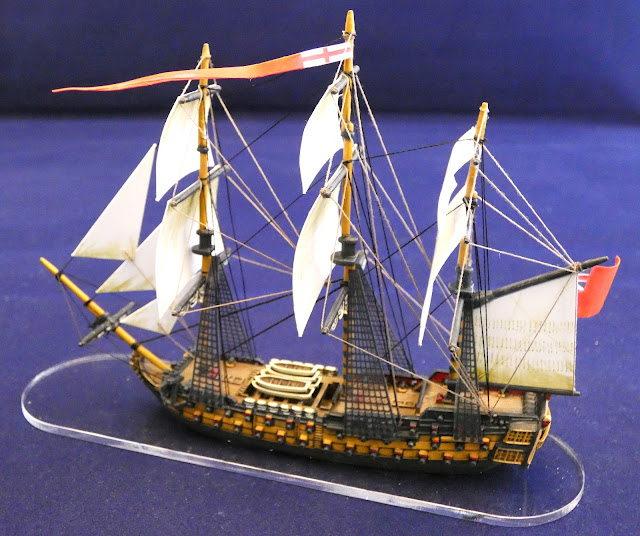My recent reading has included this interesting title, 'The Frontier Sea' written by Dave Watson (DW) looking at the warfare in and around the Adriatic Sea that formed a very specific theatre in the wider conflict in the Mediterranean during the Napoleonic Wars.
I can't say as a Napoleonic scholar that I am as well read enough on this very interesting but seemingly little covered theatre of the wider French Revolutionary and Napoleonic War, having, like many I guess, focussed more attention on the wider land war in mainland Europe, the Iberian Peninsular and the Western Mediterranean and the campaigns in Egypt and the Levant, thus leaving a poorer understanding of the role of the great powers bordering on the central and eastern Mediterranean such as Austria, the Ottomans and of course the Russians projecting power through the use of their Black Sea Fleet.
These key players were inevitably drawn into the back drop of the struggle between Great Britain and the French Empire in what developed into a sort of Mediterranean Great Game of power politics as the wider future of Europe was determined during the First Great War.
.jpg) |
| A small copy of the Johnson Map of the Austrian and Turkish Empire is used to illustrate the book and is available on Wikipedia to download which might be a good recommendation when following the text, to have a larger copy of it to hand as it will definitely help to provide a good sense of the territory in what can at times seem a complicated part of the world to understand with all the name changes that have occurred over the centuries. Johnson Map of Austrian Empire |
With my current focus on the naval conflicts that characterised this period, I am well aware of some of the naval actions that were a feature of the war that developed in the Adriatic, the Battle of Lissa fought in 1811 being perhaps the most famous, particularly in the latter part of the Napoleonic conflict and I was fortunate to listen to Gareth Glover wax lyrically about the theatre when he presented on his new book at the time 'The Forgotten War against Napoleon - Conflict in the Mediterranean 1793-1815', back in 2020, link below.
However books focussed specifically on the conflict fought in the Adriatic Sea and its coastal area are few and far between and with Glover's book acting as a prompt to know more, and having spent pleasant summer holidays in the area in places such as Pula, now in Croatia but was part of the former Yugoslavia when I visited, just after the death of Tito, the Greek Islands of Paxos and Corfu and of course Venice, several times, I was keen to develop my understanding, always with a wargaming interest underpinning the historical one.
The other interesting aspect to this particular book is that as well as being somewhat of a specialist in this specific theatre of the Napoleonic Wars, as the links to DW's blog and Balkan history platform will show, he is also a wargamer and takes an appendix to his detailed history to look specifically at wargaming the Adriatic conflicts, including details on rules, figures and scenarios that I found very useful, quoting as he does a hero of mine, the late Dr David Chandler;
'I have never underestimated the value of wargaming as an aid to serious study as well as a means of relaxation.'
A sentiment by the great man that I wholeheartedly concur with.
Interestingly my reading of this book coincided with my current diet of Audible listening whilst working on my current Camperdown project which is focussed on working my way through the Aubrey-Maturin series of books by Patrick O'Brian, and happened to be listening to one of the titles referenced, namely The Ionian Mission, which concludes with the dramatic action between Aubrey's 28-gun frigate Surprise and the Turkish frigate Torgud 32-guns, mounting 24-pounders and two mighty 42-pounders amidships supported by a corvette Kitabi 20-guns off the southern tip of Corfu.
Of course O'Brian was referencing an historical engagement for his fictional account covered in Watson's account, namely that between HMS Seahorse 38-guns and the Turkish 52-gun frigate Badere Zaffer and an accompanying corvette Alis Fezzan, on the 5th-6th July 1808, with the Turkish frigate similarly armed.
As I was reading DW's history I found myself thinking, hang on where have I heard of this action before, until I came to the next line explaining O'Brian's adaptation. Needless to say, another two scenarios have been added to the list, both the historical and fictional ones and if you are similarly interested you might find the links below useful.
.jpg) |
| HMS Seahorse capturing the Badiri-i-Zaffer 6th July 1808 - Thomas Butterworth (RMG) https://en.wikipedia.org/wiki/HMS_Seahorse_(1794) Ship Manoeuvres in Patrick O'Brian's Ionian Mission |
As well as wargaming and fictional references, DW's account is very much about the actual history, looking at the theatre in the French Revolutionary War period prior to 1797 and from then up to the Treaty of Amiens in 1802, with specific sections looking at the Russian, Ottoman, Venician and Austrian interests that impacted on British and French involvement.
 |
| Albanian Soldier (New York Public Library) Turkey 1810-17 One of the illustrations in the book covering Ottoman uniforms |
This involves looking at the forces involved, land and sea together with the key commanders such as Ali Pasha, Sultan Selim III, Admiral Fyodor Ushakov and Osman Pasvanoglu, to name a few, together with principal fortresses on the mainland and the islands that were main bases for the armies and fleets.
The Balkan region was a hotbed of small wars between the competing empires of Austria, Russia and the Ottomans where the light raiding forces of both sides were key to fighting in the rugged and broken terrain that characterises the region.
 |
| Battle of Lissa 13th March 1811 - Nicholas Pocock https://en.wikipedia.org/wiki/Battle_of_Lissa_%281811%29 |
This, alongside the wider Napoleonic conflict that sees French expansion in the area between 1802-09, also includes an account of the Russo-Turkish War of 1806-09, and the 1st Serbian Revolt, before moving to the period of French declining fortunes from 1810-15 and a greater British presence in the Adriatic against a background of another Russo-Turkish War 1809-12 and another Serbian revolt, well illustrating the hotbed of activity and diplomatic minefields that the theatre was for the competing British and French commanders, seeking to extend alliances and sow discontent among those of the enemy.
 |
| Combat de la Pomone, 1811 - Pierre Julien Gilbert |
The Frontier Sea - The Napoleonic Wars in the Adriatic, is in paperback and is published by Amazon with a cover design by Henry Hyde, featuring the battle between the French frigate Pomone 40-guns and the British frigates Alceste and Active each of 38-guns fought close to the island of Augusta (modern day Lastovo) in the Adriatic on 29th November 1811.
The book is consists of 175 pages that includes the following:
Prologue
Introduction
Chapter 1 - The Adriatic before 1797
Russia
Ottoman Empire
Austria
Naval Warfare
Chapter 2 - War comes to the Adriatic -1797 to 1802
Ionian Islands
The Russians enter the Mediterranean
Ali Pasha and the French
The War of the Second Coalition 1799-1801
Chapter 3 - Small War in the Balkans
The Military Border
The Ottoman Frontier
Border Conflicts
Ali Pasha
Chapter 4 - French Expansion 1802-09
Italy
Dalmatian Campaign of 1806
Naval Attack on Istanbul
Russo-Turkish War 1806-09
1st Serbian Revolt
Adriatic Manoeuvres
Chapter 5 - France on the Defensive 1810-15
Russo-Turkish War 1809-12
British Adriatic Offensive
Kingdom of Naples
Serbian Revolt Reignites
Chapter 6 - Armed Forces in the Adriatic
France
Russia
Britain
Ottoman Empire
Montenegro
Austria
Chapter 7 - Conclusion
Appendix 1 - Chronology
Appendix 2 - Wargaming the Adriatic Conflicts
Notes
Bibliography
Acknowledgements
End Notes
About the Author
At the time of writing, the book is available through Amazon for £8.99 and on Kindle for £8.90
I very much enjoyed this read about what for me was very much a superficial understanding of the events of this period in history for this very particular region and I now feel I have a much better understanding of them, so much so that it has informed my continued listening of Patrick O'Brian's 'Treason's Harbour' and has fired the imagination for the creation of some more single-ship and small squadron engagements that I have been compiling for my 1:700th collection of ships using the accounts from William James.
If you are interested in the theatre, I think this book would be a good one to have in the library and I'm sure I will be referencing from it in the future.
If I were to include two smallish criticisms it would include the age old one of more maps and bigger ones that are easy to consult for those of us unfamiliar with the places being referenced, and an index to aid search specific reference subjects more readily. The End Notes giving the sources is excellent but for most purposes I find a reference list at the back of my books often the most useful resource once I've read a book and discovered its worth.
Dave Watson includes his personal profile that mentions his role as Secretary of the Glasgow and District Wargames Society, amongst other things and as well as authoring several other books including 'Turkey and the Second World War' by Helion, is editor of the Balkan Military History Web Site and has his own blog, Balkan Wargamer (links above and below).
Next up on JJ's: Progress continues with the Camperdown collection as Powerful 74-guns, Agincourt 64-guns and Adamant 50-guns complete this weekend before transferring to the riggers yard next week to complete the line up of the ships in the British Leeward Division, and I have a post coming together continuing Carolyn's and my adventures on the north Queensland coast of Australia around Cairns, exploring the Great Barrier Reef and the amazing tropical rainforests in the area - more anon.
JJ


































































































